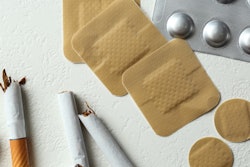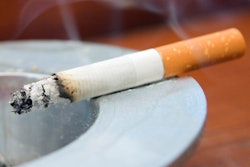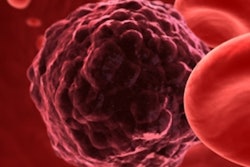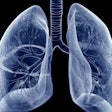
Used cigarette butts, even those that are cold to the touch, may emit the equivalent of 14% of the nicotine that actively burning cigarettes give off, according to a recent study published in Indoor Air.
Extinguished cigarette butts, which researchers have dubbed as "after smoke" or "butt emissions," that are disposed of indoors or outdoors may prolong human exposure to chemicals produced when they are burning or present before igniting them, according to the researchers.
"Nicotine emission from cigarette butts may contribute substantially to aggregate nicotine exposure due to cigarette consumption," wrote the authors, led by Dustin Poppendieck, PhD, of the engineering lab at the National Institute of Standards and Technology (NIST) in Gaithersburg, MD (Indoor Air, January 18, 2020).
About more than those who light up
A great deal of research has resulted in a better understanding of how cigarette smoking affects smokers' health, its effects on secondhand smokers, as well as thirdhand exposure, which comes from the chemical residue that stays on surfaces, such as hair, clothing, and walls, after a cigarette is extinguished. All three types of exposure can increase risks of cancers and other medical conditions.
Dentists and hygienists have unique opportunities to educate smokers about tobacco use prevention and cessation programs. Organizations, including the ADA, advise dentists to talk to patients about smoking and routinely screen all patients for both oral and oropharyngeal cancers.
Every year, smokers around the globe produce about 5 trillion cigarette butts. About 75% of smokers admitted to disposing of butts improperly by tossing them outdoors on at least one occasion. Until now, little attention has been paid to the role disposed cigarettes play in exposure to harmful chemicals.
This study, which was performed by the NIST under an interagency agreement with the U.S. Food and Drug Administration, aimed to quantify the emissions from extinguished cigarettes.
Researchers built a smoking machine to light up about 2,100 cigarettes. The machine used robotic movements to simulate what humans do when they light up. It was built to move air through each cigarette in the same way to remove some potential variables associated with the behavior of actual smokers. Then, extinguished cigarettes were placed in a walk-in, stainless steel chamber to characterize airborne emissions.
Emission rates were determined from the concentrations. Researchers measured the butts for the chemicals styrene, 2-methyl-2-cyclopenten-1-one, naphthalene, triacetin, and nicotine, which are commonly found in cigarettes.
The role of used cigarettes in exposure
The amount of nicotine from a cigarette butt at 25° C (77° F) at the 24-hour point could be up to 14% of the nicotine emitted from a burning cigarette. After 100 hours, triacetin and nicotine concentrations were about 50% of initial concentrations, while concentrations of other chemicals decayed to less than 10% of initial concentrations within 24 hours, the researchers found.
The nicotine emitted from a butt over a seven-day period was comparable to the amount of the chemical that comes from smoking, as well as second- and thirdhand smoking, they noted.
Though the findings were eye-opening, the study has several limitations, including that the use of cigarettes from different batches limited the ability to compare emission rates at 25° C and 30° C (86° F).
Further research is needed to examine the variation of emissions from cigarette butts produced from different batches of cigarettes, as well a better understanding of the affects airborne emissions from butts have on people, the authors wrote.
"Exposure scientists, risk assessors, and public health officials should be mindful of indoor exposure related to airborne emission from cigarette butts," they concluded.



















